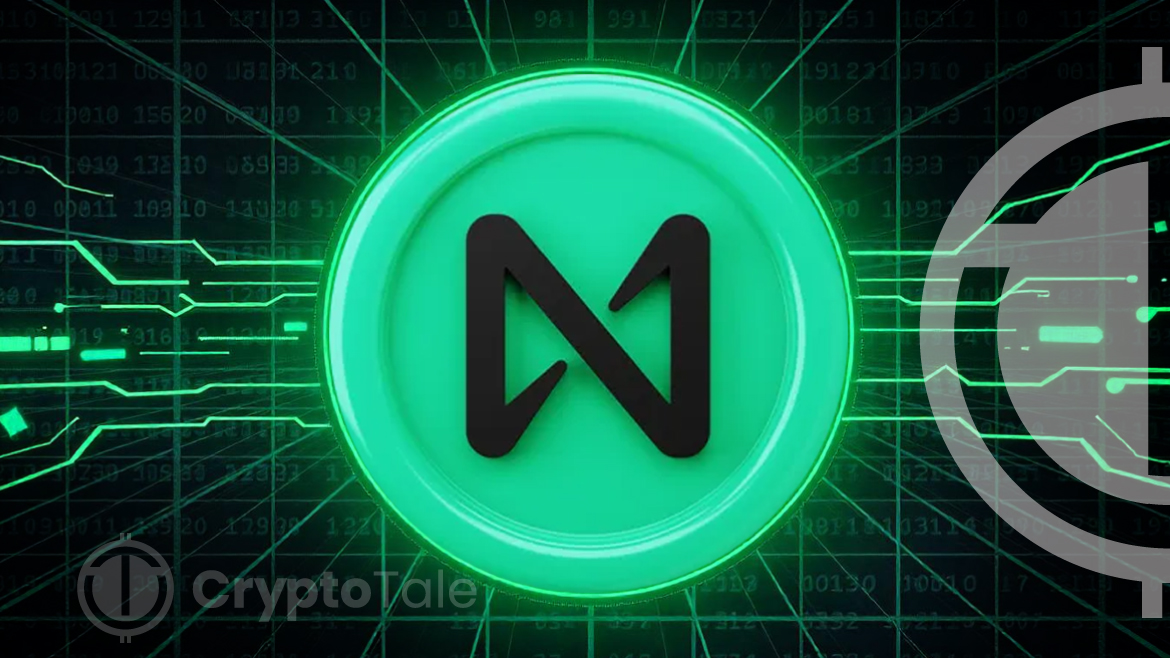
In the evolution of the blockchain landscape, two fundamental concerns continue to persist: scalability and usability. NEAR Protocol, which started in 2020, directly addresses these problems with the help of innovative solutions. Being fast, cost-effective in terms of transaction fees, and user-friendly, NEAR helps developers and users to interact with decentralized applications (dApps) easier.
What Is NEAR Protocol?
NEAR Protocol is a layer-1 blockchain with the focus on scalability and user-friendliness. One feature that sets it apart is the possibility of handling more than 100,000 TPS (transactions per second) through a partial node system called Nightshade. It enables NEAR to handle high transaction throughput without network congestion, and thus the platform is in a good standing in the blockchain universe.
The blockchain also uses a proof-of-stake (PoS) consensus mechanism. Validators, who maintain network security, are chosen based on the number of NEAR tokens they hold. This eco-friendly consensus system offers a faster and more energy-efficient alternative to the traditional proof-of-work (PoW) blockchains like Bitcoin.
NEAR’s Key Innovations
NEAR Protocol has Nightshade and Doomslug technologies which acts as a major point of differentiation from other blockchains. Nightshade is a sharding variant that splits the blockchain into smaller parts commonly referred to as shards. Each shard processes transactions simultaneously, minimizing congestion and boosting transaction speed.
Doomslug, on the other hand, is NEAR’s block production mechanism. Validators take turns producing blocks, which improves the speed of block finalization. This combination of Nightshade and Doomslug enables NEAR to finalize transactions within one second, offering a highly efficient and low-cost blockchain solution.
NEAR Protocol Architecture
NEAR’s architecture comprises two independent layers—the blockchain layer and the runtime layer. The blockchain layer handles core functions such as managing transactions and maintaining validator accounts. It passes the responsibility for executing transactions to the runtime layer.
The runtime layer processes transactions and handles account management, smart contracts, fees, and rewards. This division of tasks makes the system more flexible and scalable, allowing NEAR to support a wide range of dApps without compromising performance.
Human-Readable Accounts
One of NEAR’s standout features is its focus on user experience. Traditional blockchains use cryptographic addresses that are difficult to remember. NEAR solves this problem by introducing human-readable accounts. Instead of long, complex addresses, NEAR accounts have simple names like “alice.near,” making interactions easier for users.
NEAR also offers a unique feature called access keys, which allow users to grant different levels of permission for their accounts. These access keys enable users to safely interact with dApps, enhancing security without sacrificing convenience.
Review on Ethereum: Revolutionizing Smart ContractsNEAR Tokenomics
The NEAR token is an important part of the protocol economy. Staking, transaction fees and governance are some of the general purposes of this token. They also provide delegators and validators their rewards in NEAR tokens for their participation in the network.
To manage the supply of NEAR tokens, the protocol employs a burning mechanism. A portion of the transaction fees and smart contract interactions is burned, removing those tokens from circulation. This mechanism helps counter inflation and maintains the value of the NEAR token over time.
The current inflation rate of NEAR tokens is 5% annually. However, the burning mechanism can offset this inflation if the network processes over one billion transactions per day. This design helps balance supply and demand while encouraging participation in the network.
Interoperability with Ethereum and Beyond
NEAR Protocol is built to be interoperable with other blockchains. The Rainbow Bridge enables people to switch between NEAR and Ethereum, promoting the connectedness of the NEAR community. This bridge also works with Fungible tokens and non-fungible tokens (NFT) allowing for diverse applications.
Besides Ethereum, NEAR is ramping up connectivity to other layer-1 chains such as Cosmos and Terra. This will enable cross-chain transactions, making NEAR an integral part of the broader blockchain ecosystem.
NEAR’s Roadmap
NEAR Protocol’s development team has laid out an ambitious roadmap to enhance scalability. The platform is currently rolling out advanced sharding capabilities through a phased approach. The first phase, called Simple Nightshade, went live in 2021. This phase introduced state sharding, splitting the network into four shards.
Future phases will continue to improve scalability. Phase two will reduce the hardware requirements for validators, making the network more accessible. It will also introduce stateless validation, where validators no longer need to track all shards, further reducing the computational load.
Phase three, known as Dynamic Resharding, promises to unlock near-infinite scalability. NEAR will be able to scale the number of shards depending on the load, and thus guarantee that the network is going to be responsive all the time, even with increased traffic. This scalability is important as more users and other dApps come into the NEAR network.
Developer-Friendly Environment
NEAR Protocol makes blockchain development more accessible with its developer-friendly environment. It supports popular programming languages such as Rust and JavaScript, allowing developers to build dApps without learning new coding languages. NEAR’s comprehensive development tools and documentation further simplify the process.
Developers can also update smart contracts without affecting stored data, using NEAR’s separation of contract code from its storage. This setup reduces the complexity of maintaining dApps over time. In addition, NEAR offers free access to public methods in smart contracts, lowering the costs for developers and users alike.
A Comprehensive Review of Bitcoin Cash: Is BCH the Future?NEAR’s Blockchain Operating System (BOS)
In 2023, NEAR introduced its Blockchain Operating System (BOS), marking a significant step forward for Web3. The BOS has been designed to act as a single access point for users and developers to the world of decentralization. Due to near.org one can easily explore Web3 and Web2 applications and understand both frameworks.
The BOS also streamlines the development process. Developers can create frontends that are compatible with any blockchain, removing some of the barriers to entry for Web3 projects. By simplifying the user experience and offering tools for developers, NEAR’s Blockchain Operating System positions the platform as a gateway to the open web.
Conclusion
In summary, NEAR Protocol is the thriving in the blockchain industry with a vision of scalability, simplicity for a user and accessibility for a developer. Nightshade sharding technology and Doomslug block production are among the technologies through which the firm effectively and cheaply provides fast transactions. NEAR’s human-readable accounts and access keys enhance the user interaction with decentralized applications.
As the platform continues to grow, its interoperability with Ethereum and other blockchains could further expand its reach. With its ambitious roadmap for scalability and the introduction of the Blockchain Operating System, NEAR Protocol is set to play a key role in the future of decentralized technologies.














